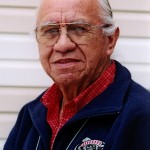
By Rachel La Corte, Associated Press
OLYMPIA — In Washington state, dairymen, freshmen and even penmanship could soon be things of the past.
Over the past six years, state officials have engaged in the onerous task of changing the language used in the state’s copious laws, including thousands of words and phrases, many written more than a century ago when the idea of women working on police forces or on fishing boats wasn’t a consideration.
That process is slated to draw to a close this year. So while the state has already welcomed “firefighters,” “clergy” and “police officers” into its lexicon, “ombuds” (in place of ombudsman) and “security guards” (previously “watchmen,”) appear to be next, along with “dairy farmers,” “first-year students” and “handwriting.”
“Some people would say ‘oh, it’s not a big thing, do you really have to go through the process of changing the language,”‘ said Seattle Councilmember Sally Clark who was one of the catalysts for the change. “But language matters. It’s how we signal a level of respect for each other.”
About half of all U.S. states have moved toward such gender-neutral language at varying levels, from drafting bills to changing state constitutions, according to the National Conference of State Legislatures. Florida and Minnesota have already completely revised their laws as Washington state is doing.
The final installment of Washington state’s bill already has sailed through the Senate Commerce and Labor Committee with unanimous approval. The nearly 500-page bill has one more committee stop scheduled before full Senate debate.
Crispin Thurlow, a sociolinguist and associate professor of language and communication at the University of Washington-Bothell, said the project was admirable.
He said that as language evolves, such efforts are more than symbolic.
“Changing words can change what we think about the world around us,” he said. “These tiny moments accrue and become big movements.”
Clark and former councilmember Jan Drago — the Seattle City Council has long eschewed the terms councilwoman or councilman — brought the issue to Sen. Jeannie Kohl-Welles in 2006 after they came across references to firemen and policemen in the mayor’s proposed budget, as well as in state law dealing with local-government pensions.
Clark and Drago’s findings sparked the initial gender-neutral language law that was passed in 2007, immediately changing those terms and directing the state code reviser’s office to do a full revision of the rest of the code. A 1983 Washington state law had already required all new statutes to be written in gender-neutral terms, so state officials were tasked with going through the rest of state statutes dating back to 1854 to revise the rest.
As in past bills on the issue that have tackled sections of the state code, some revisions were as simple as adding “or her” after “his.” Others required a little more scrutiny. Phrases like “man’s past” changes to “humankind’s past” and a “prudent man or woman” is simply a “prudent person.”
Kyle Thiessen, the state’s code reviser who has been working on the project along with two attorneys since 2008, said that the work was not without obstacles.
Words like “manhole” and “manlock” aren’t so easily replaced, he said. Substitutes have been suggested — “utility hole” and “air lock serving as a decompression chamber for workers.” But Thiessen said those references will be left alone to avoid confusion.
Republican state Rep. Shelly Short, of Addy, has voted against earlier gender-neutral language bills and said she plans to do the same this year.
“I don’t see the need to do gender neutrality,” she said, adding that her constituents want her to focus on jobs and the economy. “We’re women and we’re men.”
Kohl-Welles, who has sponsored each of the gender-neutral language bills, said that while this project hasn’t been her top legislation every year, “overall, it has important significance.”
“I believe,” she said, “that the culture has changed.”
——
Online: www.leg.wa.gov
Proposed gender-neutral terms
OLYMPIA — Here’s a look at terms being considered in a final installment of a move to revise more than 3,500 Washington state statutes in order to make them gender-neutral.
Brakeman: brake operator
Chairmanship: position of chair
Dairymen: dairy farmers
Draughtsman: drafter
Ex-servicemen: add “or ex-servicewomen”
Fireman (The 2007 bill took care of the firefighters who work for fire departments and put out fires. This fireman reference is for railway employees who tend fires in steam engines): fire tender
Fisherman/fishermen: fisher
Flagman: flagger
Foreman/foremen: jury foreperson
Freshman/freshmen: first-year student
Gripman: grip operator
Journeyman: journey level
Longshoremen: longshore workers
Man’s cause: person’s cause
Man’s past: humankind’s past
Materialmen’s: material suppliers
Motorman: motor operator
Nurseryman/nurserymen: nursery operator
Ombudsman/ombudsmen: ombuds
Penmanship: handwriting
Prudent man or woman: prudent person
Ranchmen: ranchers
Signalman: signal operator
Sportsmanlike: sporting
Sportsmanship: sporting/hunting behavior
Sportsmen: sports/outdoor enthusiast
Stream patrolman: stream patroller
Treaty Indian fisherman: treaty Indian fisher
Watchmen: security guards












